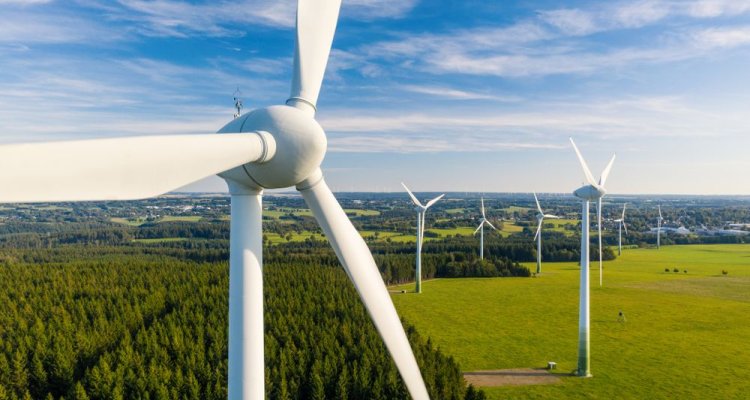
Working together to meet the challenges of energy transition
Many people do not realise it yet, but our energy supply is going to look completely different in the decades to come as the energy transition to sustainable and renewable energy gets under way. Where we now have a clear system with large energy companies that supply us with energy and bill us for it, we will soon have a multitude of larger and smaller energy suppliers with an equally wide variety of forms of cooperation and arrangements.
‘Our energy supply is becoming greener, but also much more complicated, now that we are moving from centralised to much more dispersed generation', says Michel Handgraaf of the Urban Economics (UEC) group, 'think of district residents who have a wind turbine together and solar panels on the roofs of apartment complexes. This brings with it an enormous range of new questions, because all sorts of new dependencies are arising between people, for example. How do you ensure that the distribution of energy is fair? That no inequality is created? How do we ensure energy justice and prevent energy poverty? These are big questions that we need to get to grips with now.’
UEC is working on the Smart-Beejs project (pronounced: Beegees, after the pop group) that focuses on 'Positive Energy Districts': areas that are self-sufficient in their energy generation. It is a European International Training Network (ITN) project in which eight European universities and sixteen civil society partners (companies, municipalities, NGOs) work together on the issues and challenges associated with Positive Energy Districts. A group of 15 Phd's from different disciplines follows a joint training programme and works on their own as well as on joint projects.
Our energy supply is becoming greener, but also much more complicated, now that we are moving from centralised to much more dispersed generation.
Interdependency
In the project we look at all kinds of aspects,' says Handgraaf, 'the technical, policy, spatial and economic side, always in combination with behavioural aspects. If, for example, neighbours operate a wind turbine together or if residents of an apartment complex purchase energy from solar panels on their roofs, there are of course all kinds of positive aspects, such as more social interaction and integration, but the interdependency can also lead to problems. What if the wind turbine breaks down, or neighbours get into a quarrel with each other?’ Spatial aspects include, for example, the urban-rural relationship when it comes to supply and demand. Handgraaf: 'Think of placing windmills in the countryside to supply a city with energy: how do you divide costs and revenues?’
The variation in the availability of energy also leads to many questions. Will energy become more expensive when there is less supply in a period with little sun or wind? And cheaper with a lot of supply? And who is going to determine that price? And where will we leave the energy surplus? Cars, for example, can act as a buffer in the event of surpluses. But what if cars will soon also generate their own energy? In the event of an energy shortage, will an employer be able to ask employees to generate energy to heat the office? And what kind of compensation would be involved?
The whole energy process becomes much more complicated. With this project we are gathering a wealth of knowledge and insights that policymakers and stakeholders desperately need in order to manage this transition.
Agent based modelling
In the project UEC provides knowledge in the field of spatial and behavioural economics. Agent based modelling plays an important role in thinking through processes and questions in the process. Handgraaf: ‘Together with the Information Technology group we look for answers on questions like: how do people behave in different situations and what buttons can you press to stimulate developments and prevent undesirable effects?’
‘Yes, from time to time I do wonder where we will end up if everyone starts to produce or store energy in addition to consuming', Handgraaf confesses. ‘The whole energy process becomes much more complicated. Anything can go wrong. How do you get people to participate in the transition? How do you reconcile efficiency, honesty and the cost-benefit of the energy system? Do you want to be condemned to your neighbour when it comes to your energy supply? With this project we are gathering a wealth of knowledge and insights that policymakers and stakeholders desperately need in order to manage this transition. And we are training fifteen top players who are capable of connecting all kinds of domains - different scientific disciplines, policy, industry - with each other. This project is a celebration of interdisciplinarity with engineers working with social scientists in mixed teams. That really is invaluable in a transition like this'.